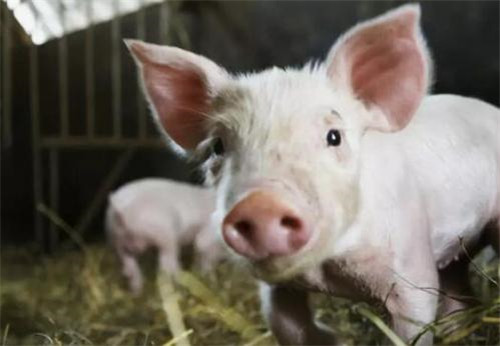Differential Diagnosis of Transmissible Gastroenteritis and Epidemic Diarrhea in Pigs
Porcine transmissible gastroenteritis generally has a short incubation period and spreads quickly and can spread to the whole population within a few days. Commonly used drugs have no effect in treatment. Porcine epidemic diarrhea has certain seasonality, and piglets can be cured after treatment.
The clinical symptoms of porcine epidemic diarrhea are very similar to those of transmissible gastroenteritis. Once suckling piglets are infected, the symptoms are obvious, such as vomiting, diarrhea, dehydration, movement stiffness and so on. Vomiting mostly occurs after lactation and feeding, and the body temperature is normal or slightly higher. Diarrhea and vomiting occurred 12-20 hours after artificial inoculation of piglets. Ascites and motor stiffness were seen 20-30 hours after exposure, and 90 hours at the latest. Diarrhea begins with yellow sticky stool, then turns into watery stool and is mixed with yellow and white curd clots. When diarrhea is most serious, the feces discharged are almost all water. Vomiting and diarrhea are accompanied by depression, anorexia, weight loss and exhaustion in pigs. The severity of symptoms is related to the size of age, the younger the age, the more serious the symptoms. Suckling piglets within a week often die of dehydration within 2-4 days after diarrhea, with a mortality rate of 50%. The mortality rate of piglets infected with this disease after birth is higher. Weaning pigs and adult pigs showed mild symptoms, depression and poor appetite. Diarrhea lasted for 4-7 days and gradually returned to normal. Only vomiting and anorexia occurred in adult pigs.

Porcine transmissible gastroenteritis: commonly used drugs have no effect in treatment. The whole blood or serum of rehabilitated pigs makes newborn piglets oral, which has a certain preventive and therapeutic effect. Pig farms with transmissible gastroenteritis should immediately isolate diseased pigs and disinfect pig sheds, sports grounds, appliances, vehicles, etc., with 2% Murray and 3% caustic soda. The patients were strictly isolated from healthy pigs and the losses were kept to a minimum.
Porcine epidemic diarrhea: symptomatic methods are usually used to reduce the mortality of piglets and promote rehabilitation. The diseased pigs were given oral salt solution daily (sodium chloride 3.5g, potassium chloride 1.55g, sodium bicarbonate 2.5g, glucose 20g, normal water 1000ml). The pigsty should be kept clean and dry. 2-5-week-old pigs can be treated with antibiotics to prevent secondary infection. 10ml can be taken orally daily for 3 days with anticoagulant or hyperimmune serum of rehabilitated sows, which has a certain therapeutic and preventive effect on newborn piglets. (source: twin Pig Service platform)
- Prev

Don't worry about the prevention and treatment of pig disease with drugs.
Don't worry about the prevention and treatment of pig disease with drugs.
- Next

The causes and countermeasures of sow hysteritis in large-scale pig farms!
The causes and countermeasures of sow hysteritis in large-scale pig farms!
Related
- On the eggshell is a badge full of pride. British Poultry Egg Market and Consumer observation
- British study: 72% of Britons are willing to buy native eggs raised by insects
- Guidelines for friendly egg production revised the increase of space in chicken sheds can not be forced to change feathers and lay eggs.
- Risk of delay in customs clearance Australia suspends lobster exports to China
- Pig semen-the Vector of virus Transmission (4)
- Pig semen-the Vector of virus Transmission (3)
- Five common causes of difficult control of classical swine fever in clinic and their countermeasures
- Foot-and-mouth disease is the most effective way to prevent it!
- PED is the number one killer of piglets and has to be guarded against in autumn and winter.
- What is "yellow fat pig"? Have you ever heard the pig collector talk about "yellow fat pig"?

